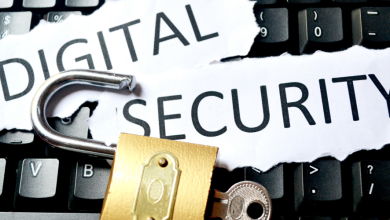Online Certificates for First Aid Trainers
Contents
In an era defined by technological advancements and the rapid digitalization of various sectors, the world of first aid training has not remained untouched. With the development of digital certifications, the traditional methods of obtaining and managing certifications for first aid trainers have undergone a revolutionary transformation.
This blog post explores how digital credentials for first aid trainers can change the industry’s training culture and change the way firms educate their employees. Gone are the days of paper-based certificates, where cumbersome processes often hindered the efficiency of obtaining and distributing certificates. In the digital age, first aid trainers now have access to streamlined certification processes that offer convenience and accessibility to trainers and trainees. Introducing online certificates in first aid training marks a significant shift towards more efficient and secure certification methods.
The Rise of Online Certificates: A Paradigm Shift in First Aid Education
The advent of online certification in first aid training has revolutionized the acquisition, management, and utilization of such credentials, marking a significant paradigm shift. The fact that traditional paper banking has the convenience and use of virtual certificates thus powerfully demonstrates the pursuit of first aid training.
Traditional Paper-Based Approach: Limitations and Challenges
First aid instructors previously relied on paper certificates to verify that their students completed their training program. While it has served to ensure the adequacy of these certificates, it distinguishes the limitations from several accompanying regulations. Issuing, printing, and distributing paper certificates has been time-consuming and resource intensive.
In addition, the large amount of paper certificates has created difficulties in issuing and logistics. Instructors had a hard time keeping track of their credentials, resulting in potential errors, lost certificates, and surveillance. Also, the traditional approach lacked security features and became vulnerable to fraud and enforcement.

The Emergence of Online Certificates: Streamlining the Certification Process
The emergence of online certificates has been an important milestone in first-aid training. Leveraging the power of technology, virtual certificates offer a more efficient and accessible certification process. Thanks to online certificates, trainers can instantly issue certificates to those who successfully complete the training, eliminating unnecessary delays.
Advantages of Digital Certification for First Aid Instructors
Digital certification, which replaces traditional certification methods, offers a number of advantages for first aid instructors. Online certificates, which facilitate certification processes by using the power of technology, improve the experience of trainers and trainees and offer a more efficient and safe training environment.
Instant Access
Online certificates are immediately available to instructors who successfully complete the training program. It puts an end to long waiting times in traditional paper-based methods, allowing instructors to receive and use their certificates after training instantly.

Reliability and Anti-Forgery
Online certificates include advanced security features. It provides protection against forgery by using particular digital signatures and unique identifiers. These features help verify the authenticity of the certificate and increase the reliability of certificates.
Easy Verification
Verification of online certificates can be done digitally and instantly. Interested parties can quickly check the validity of the certificate through online databases. This allows employers or other educational institutions to access instructors’ qualifications quickly and reliably.
Data Monitoring and Analysis
Provides data collection in digital certification, certification, and usage processes. Educational institutions can evaluate the effectiveness of the training and improve their training programs by analyzing this data.

Ensuring Credibility: The Authenticity and Security of Digital Certification
As digital certification has become increasingly widespread, the authenticity and security of certificates have become an important issue. Designing the digital certification process to ensure that certificates are not forged and are trustworthy ensures that certification systems are effective and reliable.
Here are the measures taken to ensure the integrity and security of digital certification:
Unique Identifiers
Online certificates must have unique identifiers for each certificate. These identifiers are used to verify that the certification is not a duplicate or a forgery. With unique identifiers, each certificate can be uniquely identified and tracked.
Digital Signatures
Digital signatures are used to secure online certificates. Digital signatures verify that the certificate content has not been altered and is protected against forgery. This increases the reliability of certificates.
Encryption
The content of online certificates is protected by encryption. This protects certificates against unauthorized access and keeps the content confidential.
Embracing Technology: The Transition to Electronic Certificates in First Aid Instruction
The transition to electronic certificates in first aid training stands out as an essential step in adapting to technology and digital transformation. The transition from traditional paper-based certificates to electronic formats offers several advantages for trainers and trainees, making certification processes more effective and efficient.
Environmentally Friendly Approach
The transition to electronic certificates positively impacts the environment by reducing paper consumption. Environmental impacts such as tree cutting, energy, and water use required for producing paper certificates are minimized. This way, trainees and trainers contribute to certification processes by adopting an environmentally friendly approach.
Easy Access
Electronic certificates speed up and facilitate certification. Instead of dealing with the physical printing and distribution of certificates, digitally issued certificates become instantly accessible. Trainees receive their credentials electronically and can easily share them when needed.
The transition to electronic certificates in first aid training is essential in adapting to technology and embracing digital transformation. The advantages of electronic certificates, such as their environmentally friendly approach, fast and easy access, reliability and accuracy, compatibility with distance learning and online platforms, data analysis and tracking, improve certification processes and play an essential role in future training practices. Trainers and trainees can make the most of certification processes by moving forward in line with technology.
Conclusion
In conclusion, the emergence of online certificates for first aid trainers has revolutionized the training industry. They offer a more efficient, reliable, and environmentally friendly alternative to traditional paper-based certification methods. As the digital age progresses, embracing this technology will be crucial in ensuring the continued advancement and effectiveness of first aid training.



